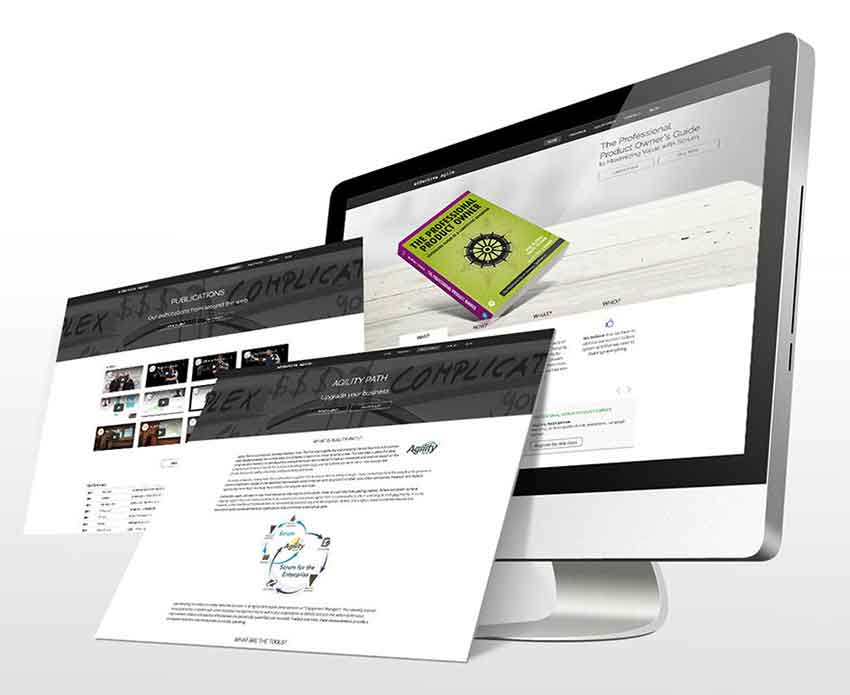Show:
Psychology and the Neuroscience of Awesome UX Design
Human cognition is very complex. It is something we still try to fully understand to this day. There are many studies that revolve around this topic. These tend not to be really noteworthy. Some have a small sample size, while others employ unscientific methods or take on false assumptions. Simply put, it is not a subject that we can easily dissect. Gut reactions and initial impressions consist of many variables. Not all of them are fully known to us. There is a lot of misinterpreting someone’s stances. This is where neuroscience steps in. Observation and interviews are put to the second field. For UX researchers, technology opened many different avenues of tackling complicated subjects. For instance, take eye-tracking. Eyes tend to give out everything if you know what to look for. Even the subjects cannot disguise the reactions their eyes can present. How does that help our UC endeavours?

1. Emotional design
Emotional design is a concept. It focuses on designing things that spark emotions. In turn, these emotions need to result in positive user experiences. We can achieve this on three cognitive levels. Those levels are visceral, behavioural and reflective. The goal is for the potential clients to experience positive associations with the brand. Also, negative emotions can also invoke good associations. It is important to distinguish between these two. Products, brands etc. need engagement. If we can make it positive, that is great. But, push-pull methods do also work. To create a cycle of negative and positive emotion in just the right ratio is an art in itself. The takeaway here is to create emotional signals through our design. Even the blandest of appearances can create subjective emotions in some. That is why it is always for the best to steer those emotions in the way it benefits or goals.
2. Applying emotional design
First things first, you will need a functional design to start with. You will also need a firm understanding of your users. This is always done through UX research. In short, there are plenty of ways you can make emotional design work for you. Your content needs to have a personality. Not only that but a signature, recognizable one. Your brand, products and services need to be recognizable. Remember that fast way of thinking? Users need to recognize your design patterns in the first few milliseconds. Include personal touches. Users like to see a face behind an otherwise machine-looking design. Familiarity is the key. Do not be afraid to use colours. The science of colour is an entire thing on its own, be sure to make the most of it. utilize all the multimedia types of content. Audio, video, images, you name it. the more engagement, the better the experience.
3. The subconscious
It is well known that our subconscious drives most of our life. No matter how small our actions are, an untold number of neurons fire in an instant. We make most of our decisions subconsciously and are not aware of them for the most part. We form first impressions in a matter of a few milliseconds after exposure to a stimulus. It takes the eye a few hundred to blink, just to put that into perspective. That means your product, service and brand has only a few milliseconds to give off a positive impression. These impressions might not even cognitively register. But hey are there. Most importantly, they impact viewer behaviour. For instance, take page loading times. Slow loading times tend to have the biggest negative impact on user behaviour. Off-topic content can make the user navigate away from your webpage. Let us quickly cover the two types of thinking.

4. Fast thinking
This type of thinking is also known as automatic, frequent, emotional, and subconscious thinking. It is the reactive type, as opposed to proactive or analytical. It is the more instinctive way to process information and react accordingly. Take for instance the measurement and determination of time and distances. It is also responsible for our emotional responses. It is the more primal, older part of our brain. Some refer to it as the lazy brain. The instinctive is also something that we actively try to suppress. As information and logical thinking take over, we shun the instinct in favour of more analytical ways of thinking. But the truth is, our subconscious will always be a deep part of ourselves. UX designers are aware of this. That is why they also leverage this part of our brain to create positive feedbacks.
5. Slow thinking
This is the slower, effort0 requiring, logical, calculating type of thinking. It is the conscious process in our heads. Lastly, it is the most infrequent type of thinking. This analytical approach is required for more complex scenarios we tend to encounter from time to time. Determining adequate social behaviour requires a conscious effort for most people. Also, comparing two products with mixed variables between them. Prices and characteristics are man-made constructs that have been around for a very short amount of time. Even if that means several thousand years, that is not very long. Conscious effort takes much energy. Our brains take about 20-25% of our daily energy expenditure. That is why or brains do not want to re-process information every time it is faced with a new scenario. Therefore, most thinking falls under the previous category. However, this category also needs to be taken into account in UX design.
6. Psychology in Design
Our brain is by far the most expensive organ in our bodies. Especially in proportion to our body, it only takes about 2% of our total mass. It likes pattern recognition and shortcuts. This way, it evolved to waste as little energy as possible. It is a survival mechanism. The brain recognises things and ignores those that are no longer relevant. This makes UX more difficult. Basically, we need to study something that the subjects do not even perceive. That is why the researchers need to do it for the subjects. This can be done with eye-tracking cameras. Emotional responses can also be determined with skin sensors and facial analysis. Electroencephalography is used to track brain activity. These tools make it possible to capture the full image of someone’s interest. Neuroscientists help us diagnose problems and reveal solutions and best practices. What are some of the basic principles?
7. Easy identification
Make your intentions and goals easily identifiable. People have basic expectations before they even land on your webpage. The trick is to try and stay close to those expectations. It helps the users make those subconscious decisions in ways we want them to. Especially in a highly competitive web design in Sydney. You will need all the advantage you can get. Your website needs to offer two things. The first one is the thing users are actually looking for. The second is the quality of that offer. If one of those two are not met, the user will quickly bounce to a competitor. Keep your designs simple. It will help users orient themselves much easier. On the other hand, do not oversimplify your design to the point of it being unrecognizable. Put the most important information front and centre. Declutter and re-arrange your website as needed.
8. Insinuations for the future
Prime your users for upcoming content. Depending on your industry or niche, what you are offering might not be understandable for all. Provide users with information or interaction methods to improve their understanding of your offerings. Users need to expect certain UI elements from you. Interactions inspire engagement. Timing is another science all into itself. Be careful about any information that might be misconstrued. Some people might misinterpret the content you post. That is not something you want. You need to make sure that all the information you offer can only be understood one way. And that way is aimed towards your company and brand goals.
9. Properly managing text
People tend to actually read about one-fifth of the text you put on a page. That means a lot of wasted effort on your part. The average online user has a very short attention span. Bland, black and white text will not hold their attention for long. Luckily, there is a lot one can do to improve user readability. Keywords are very important in the SEO world, highlight them. Bullet your lists, make your subheadings meaningful, do not just pile on heaps of text. Each paragraph should contain only one idea. Separate those in different paragraphs. Do not know how much text to put in? Here is a general rule of thumb. Use about half of the word count you would use in conventional writing. Adapt these rules to your industry and niche as you see fit. Experiment and track your metrics.
UX and UI designers need to be mind readers. Quite literally so, as they are researching psychology, the brain and the human perception. On top of that, design norms will continue to change forever. Stay on top of neuroscience to maximise your UX delivery.

 Return to Previous Page
Return to Previous Page








